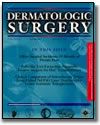Tumescent Technique for Regional Anesthesia

Dermatologic Surgery
1990 Abstract
Klein JA.
Tumescent technique for regional anesthesia permits lidocaine doses of 35 mg/kg
for liposuction.
J Dermatol Surg Oncol. 1990 Mar;16(3):248-63.
Department of Dermatology, California College of Medicine, University of
California, Irvine.
The tumescent technique for local anesthesia permits regional local anesthesia
of the skin and subcutaneous tissues by direct infiltration. The tumescent
technique uses large volumes of a dilute anesthetic solution to produce swelling
and firmness of targeted areas. This investigation examines the absorption
pharmacokinetics of dilute solutions of lidocaine (0.1% or 0.05%) and
epinephrine (1:1,000,000) in physiologic saline following infiltration into
subcutaneous fat of liposuction surgery patients. Plasma lidocaine
concentrations were measured repeatedly over more than 24 hours following the
infiltration. Peak plasma lidocaine levels occurred 12-14 hours after beginning
the infiltration. Clinical local anesthesia is apparent for up to 18 hours,
obviating the need for postoperative analgesia. Dilution of lidocaine diminishes
and delays the peak plasma lidocaine concentrations, thereby reducing potential
toxicity. Liposuction reduces the total amount of lidocaine absorbed
systemically, but does not dramatically reduce peak plasma lidocaine levels. A
safe upper limit for lidocaine dosage using the tumescent technique is estimated
to be 35 mg/kg. Infiltrating a large volume of dilute epinephrine assures
diffusion throughout the entire targeted area while avoiding tachycardia and
hypertension. The associated vasoconstriction is so complete that there is
virtually no blood loss with liposuction. The tumescent technique can be used
with general anesthesia or IV sedation. However, with appropriate
instrumentation and surgical method, the tumescent technique permits liposuction
of large volumes of fat totally by local anesthesia, without IV sedation or
narcotic analgesia.
Publication Types:
Review
Review, Tutorial
